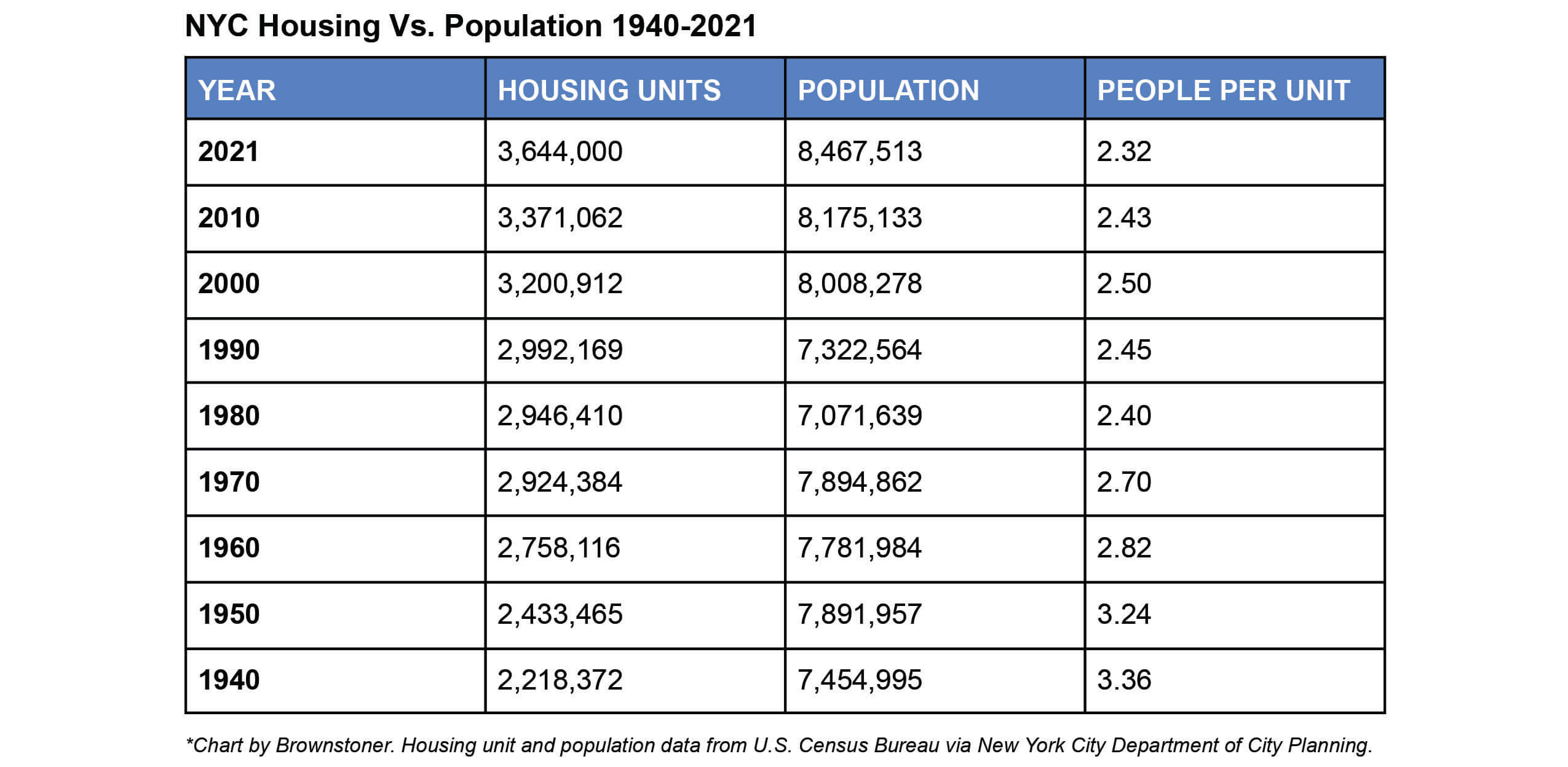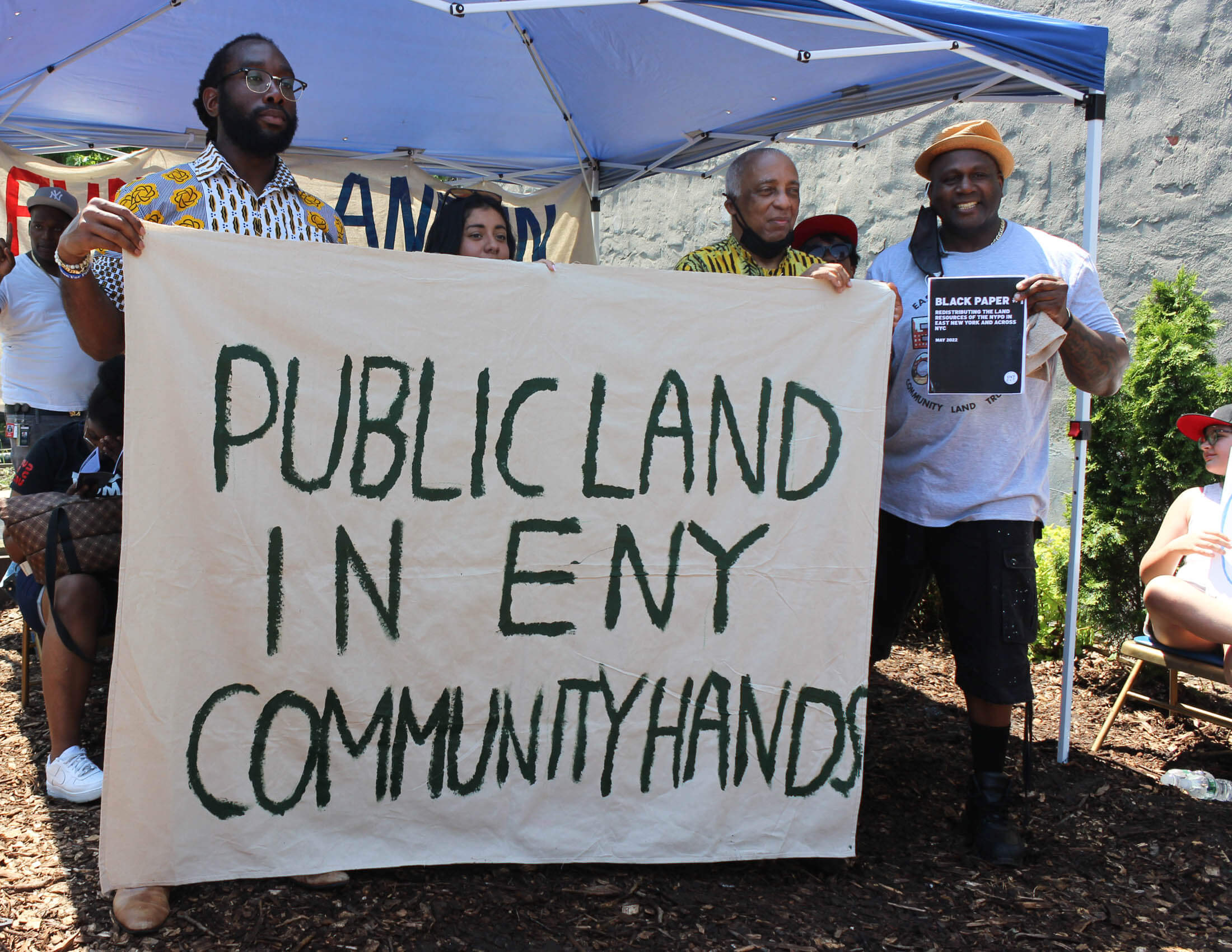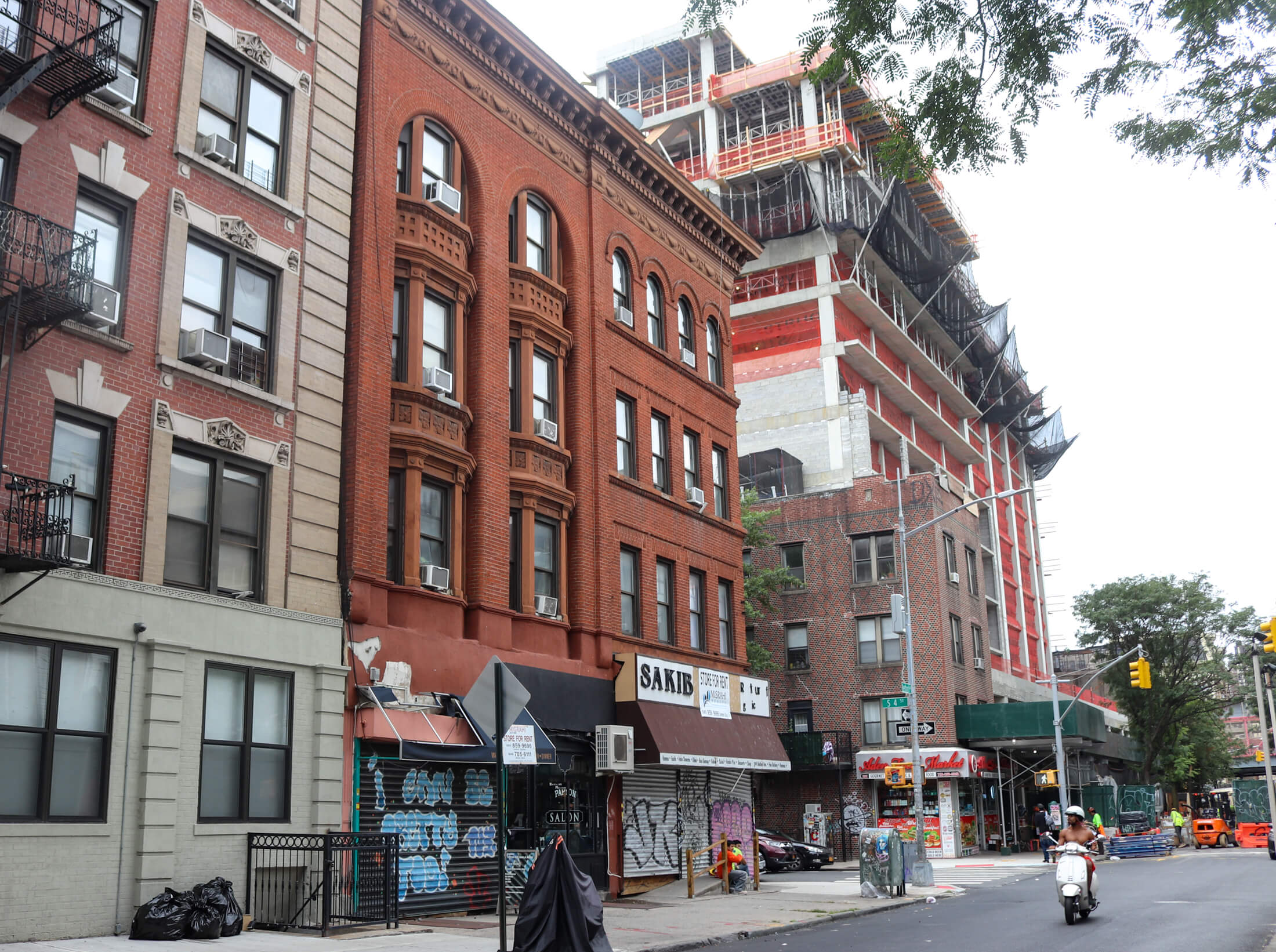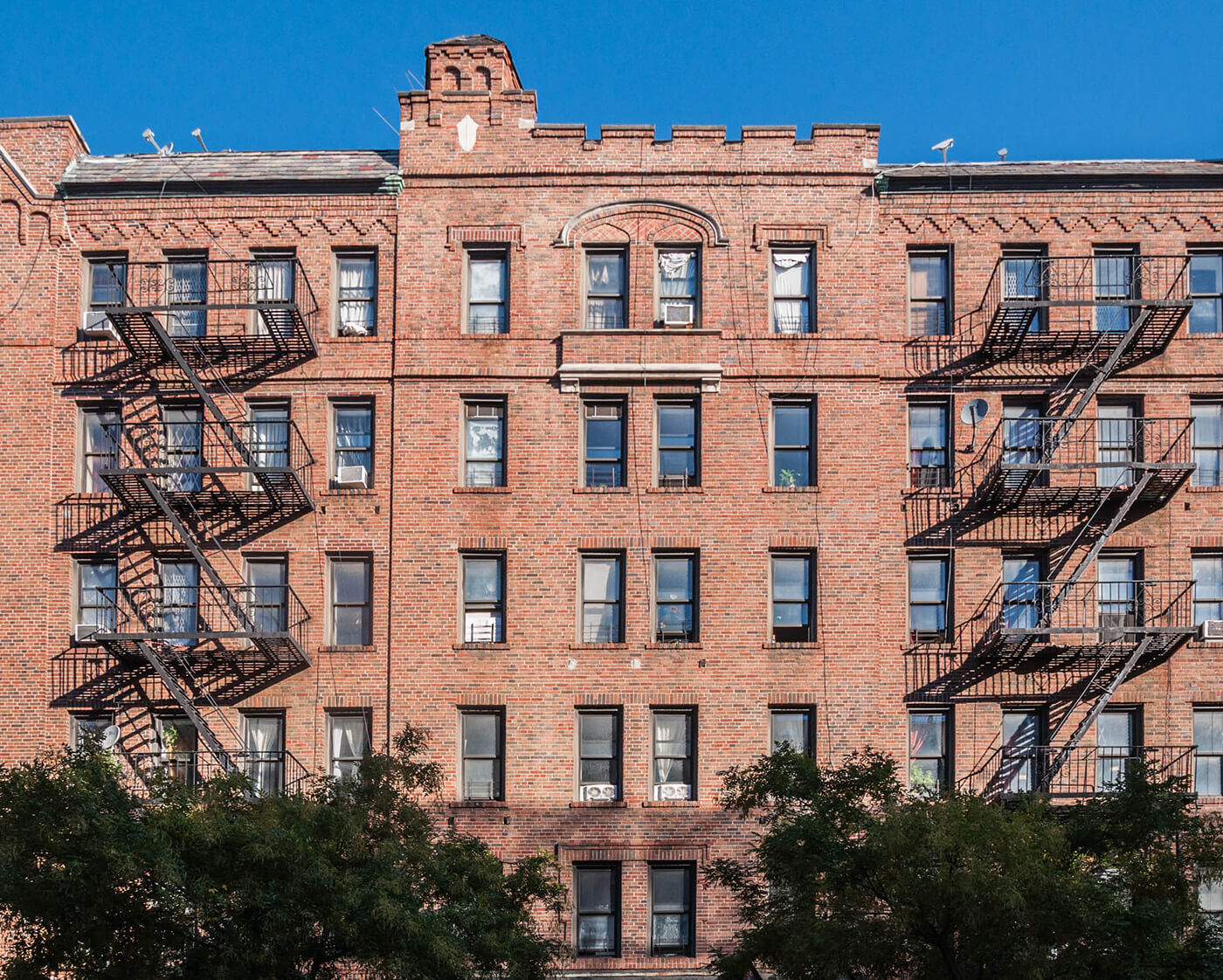NYC Has More Housing Than Ever Before Yet It's Still Not Affordable
Can we build our way out of an affordable housing crisis? The data suggests that merely adding units alone won’t solve the problem.

Old and new buildings in Downtown Brooklyn in 2022. Photo by Susan De Vries
Can we build our way out of an affordable housing crisis? Developers, elected officials, policy experts, and others say more housing is needed to keep pace with a growing population and bring down prices.
But a look at historic data shows New York City today has more homes per person than in any decade since 1940, the earliest year for which figures are available. Yet housing is more unaffordable than ever.
The data suggests that merely adding units alone won’t solve the problem.

Population and housing growth
New York City’s population is at a high, despite annual net outflow, thanks to births. The population in 2021 hit 8,467,513 people, up from 7,454,995 in 1940. Housing has grown along with the increase in population, reaching 3,644,000 units in 2021, versus 2,218,372 homes in 1940. The city now has 2.32 people per every housing unit, versus 3.36 people per home in 1940, census data show.
All vacancy rates are not equal
There is no lack of supply of market rate or luxury homes, but there is a dearth of affordable ones.
In 2021, the vacancy rate for rentals under $1,500 a month was less than 1 percent. The vacancy rate for homes priced at $2,300 and up a month was 12.64 percent, according to the city’s 2021 New York City Housing and Vacancy Survey.
A majority of New York City rentals are market rate or luxury units. In 2021, rent stabilized apartments numbered 1,006,000, making up 28 percent of the total housing stock in the city and 44 percent of rentals. Since the condo conversion boom of the 1980s and vacancy decontrol in the late 1990s, NYC has lost about 1 million stabilized units.

Two charts from the 2021 New York City Housing and Vacancy Survey, figures 9 and 10, show the striking mismatch between incomes and rents. Most of the units available to rent were affordable for households making between $100,000 and $150,000 a year. But the majority of households were making $74,000 or less a year — and a significant chunk earned less than $24,000.
A crisis at the low end of the market
Even with programs such as the state’s now-expired 421-a tax break and the city’s Mandatory Inclusionary Housing, the amount of genuinely affordable housing created through private, for-profit development is negligible. In its most recent iteration, 421-a required developers to set aside 20 percent of units for households earning 130 percent of Area Media Income, or $121,420 for one person.

While Mandatory Inclusionary Housing has lower income bands, developers can’t afford to create the amount of genuinely affordable housing New York City needs in private, for-profit developments. To meet the demand for affordable housing at the low end of the market, units must be fully subsidized, advocates say.
“The highest vacancies are in areas of new construction,” Tom Angotti, a professor of urban policy and planning at Hunter College and CUNY, told Brownstoner. “We need subsidized housing, we need truly affordable housing, and it’s going to take public subsidies.”
“If you have a housing crisis at the low end of the market, the only solution is to create housing at the low end of the market,” said Lynn Ellsworth, economist and founder of nonprofit Human-scale NYC.

Some of the options that have been proposed to maintain or create new genuinely affordable housing include tax breaks for landlords of rent-stabilized buildings in good repair and converting tax-lien foreclosures to low-income rentals and co-ops rather than selling them to private, for-profit developers. Perhaps most important, New York City should increase the amount of not-for-profit, subsidized, 100 percent affordable housing it builds every year, said advocates.
Rather than encourage developers to knock down existing affordable housing to build luxury skyscrapers in the historic city center, according to Ellsworth, New York City should fund the building of low-cost, affordable six-story buildings on empty lots and in the outer reaches of the boroughs that are within the reach of those with low and moderate incomes.
— Additional reporting by Anna Bradley-Smith
Related Stories
- Will the Mayor’s Affordable Housing Plans Save New York City or Destroy It?
- Despite Building Boom, Housing in Brooklyn Is Not Getting More Affordable
- Fix for Brooklyn’s Housing Crisis Could Also Improve Borough’s Architecture
Email tips@brownstoner.com with further comments, questions or tips. Follow Brownstoner on Twitter and Instagram, and like us on Facebook.









What's Your Take? Leave a Comment